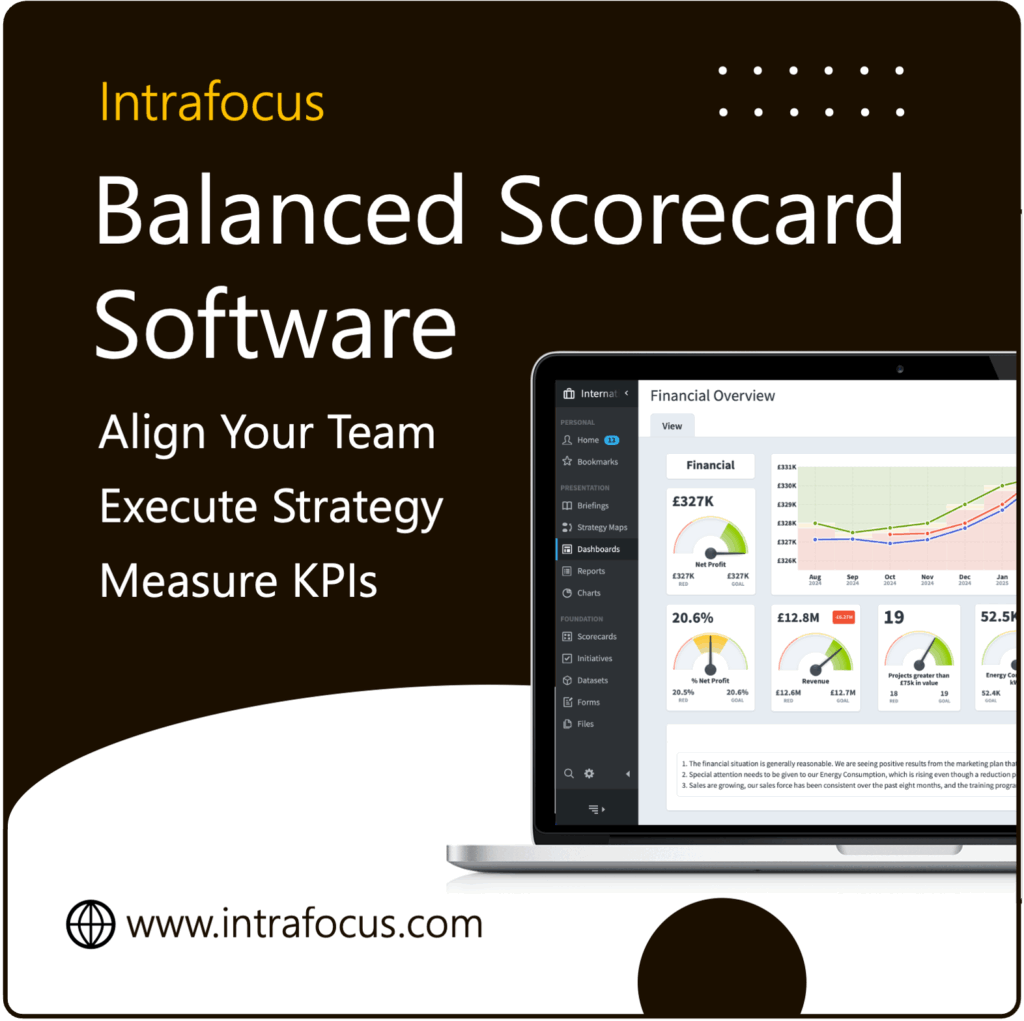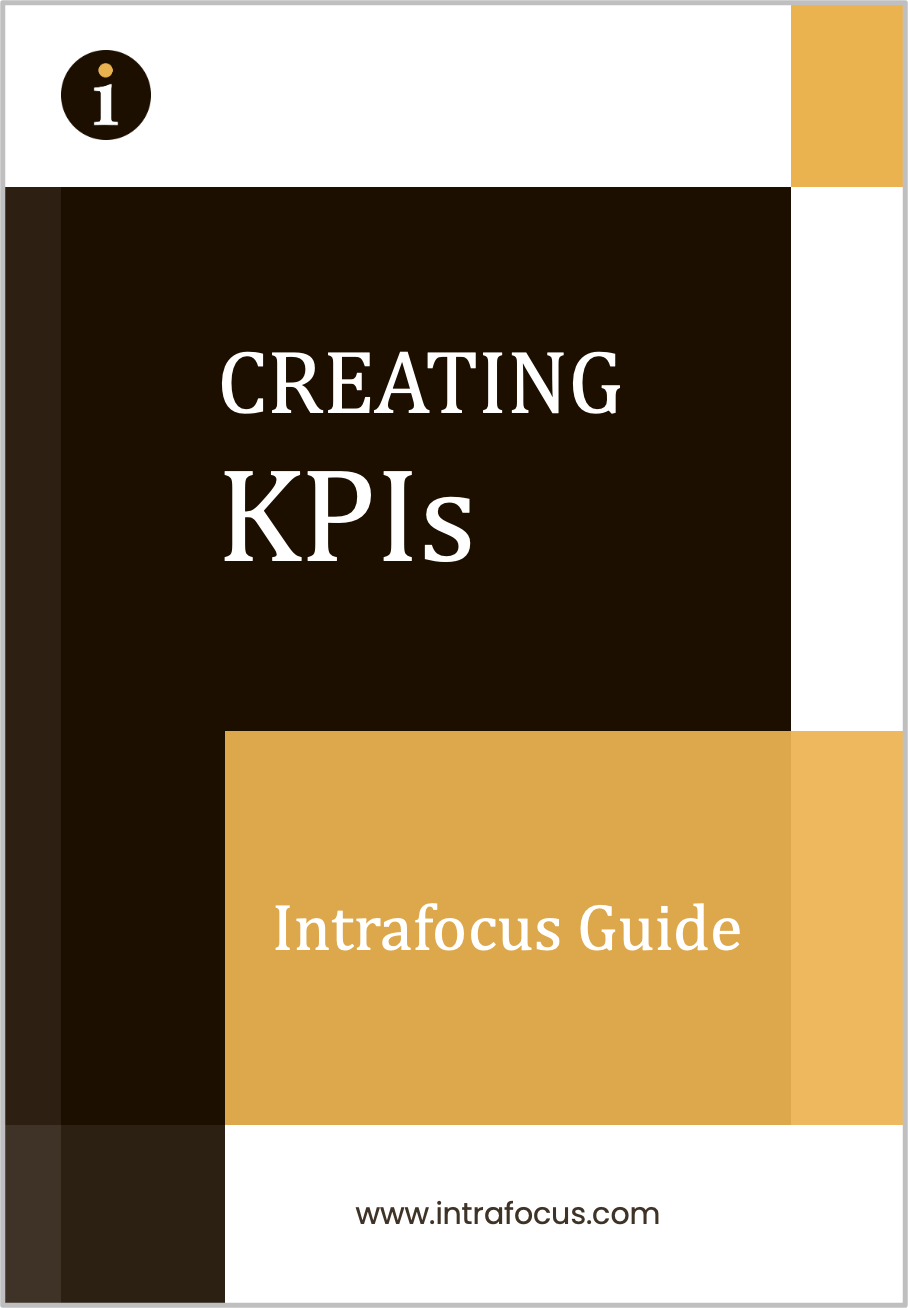Most organisations are good at writing down goals. The problem is that many of these goals are vague and do little to guide decision-making. Statements like “be the best in our market” or “deliver innovation” sound inspiring, but they do not provide clarity on what actions to take or how to measure progress.
Strategic objectives bridge this gap. They provide direction and focus, turning broad ambitions into statements that can be acted upon. Without them, strategy execution often stalls or drifts into a collection of disconnected activities.
See also: Spider Impact Balanced Scorecard software — supplied by Intrafocus across the UK & EMEA.
Today, we’ll look at how to define strategic objectives that genuinely matter. You’ll learn what makes a good objective, how to balance them across the organisation, and the common mistakes to avoid. While AI-driven analytics can help refine objectives by identifying performance and customer behaviour patterns, the real value lies in setting clear, aligned, and achievable objectives.
What are Strategic Objectives?
Strategic objectives are high-level statements that describe what an organisation needs to achieve to deliver its strategy. They are not as broad as a vision or mission but are not as detailed as key performance indicators or projects. Instead, they sit in the middle, translating ambition into action.
Think of them as the guiding posts on your strategic journey. A vision might say, “To be the leading regional healthcare provider,” while an objective would specify, “Improve patient care quality by reducing treatment errors by 20%.” The vision inspires; the objective directs.
At Intrafocus, strategic objectives form the third step of the Seven-Step Strategic Planning Process. Once you have established your foundation (Step 1: Vision and Purpose) and assessed your current position (Step 2: SWOT, value proposition, and priorities), the next step is to define objectives that set the course for measurable success.
Well-written objectives make strategy practical. They ensure that the organisation’s purpose is not just expressed in lofty statements but grounded in outcomes that people can work toward.
.
Characteristics of Effective Strategic Objectives
Not all objectives are created equal. Some inspire focus and alignment, while others confuse or overwhelm. To ensure your objectives matter, they should be:
- Clear: They must be easy to understand across the organisation. Everyone, from the boardroom to the front line, should know what the objective means.
- Aligned: Objectives should link directly to your vision, mission, and strategic priorities. They may not be worth pursuing if they cannot be traced back to your purpose.
- Balanced: Cover all four Balanced Scorecard perspectives: Financial, Customer, Internal Processes, and Organisational Capacity. This ensures objectives drive holistic performance.
- Measurable: Even though objectives are not KPIs, they must lend themselves to measurement. If progress cannot be tracked, the objective is ineffective.
- Actionable: They must guide decision-making and help teams prioritise. An objective that does not influence what people do day-to-day will not have an impact.
Consider this example, where the strong objective provides clarity, direction, and a basis for measurement:
- Weak objective: “Be innovative.”
- Strong objective: “Accelerate product development to reduce time-to-market by 15%.”
For more on writing business objectives, resources such as the Balanced Scorecard Institute provides helpful guidance and frameworks.
The Balanced Scorecard Lens
One of the biggest risks when setting objectives is creating an unbalanced strategy. Organisations often focus heavily on financial outcomes because they are the most visible and urgent. While financial results are essential, they are not the only drivers of long-term success.
This is where the Balanced Scorecard provides a valuable framework. By organising objectives into four perspectives (Financial, Customer, Internal Processes, and Organisational Capacity) leaders can ensure that objectives reflect both short-term results and long-term capability building.
What could these objectives look like?
- Financial: Increase recurring revenue by 10% over the next two years.
- Customer: Improve customer satisfaction scores by 15% through enhanced service delivery.
- Internal Processes: Reduce order processing errors by 30% to strengthen operational efficiency.
- Organisational Capacity: Strengthen IT resilience by achieving 99.9% system uptime.
At Intrafocus, we deliberately use the term Organisational Capacity instead of the traditional Learning and Growth. This reflects the reality that IT systems, infrastructure, and people capabilities often represent the bulk of strategic investment.
Tools like Spider Impact make mapping these objectives easier, linking them to priorities, and visualising how they contribute to the overall strategy. The result is a balanced, interconnected set of objectives that gives a complete picture of organisational health.
Common Mistakes When Defining Objectives
Even with a clear process, organisations frequently make mistakes that undermine their strategy. Some of the most common include:
Being too vague: Objectives like “be innovative” or “be the best” are so broad that they provide no real direction.
Confusing objectives with initiatives: An initiative is an action, such as “launch a new website.” An objective is an outcome, such as “improve digital engagement.” Mixing the two creates confusion.
Creating too many objectives: More is not better. Too many objectives dilute focus and resources. A handful of well-chosen objectives will achieve far more impact than a long list.
Failing to link objectives to strategy: Objectives should always flow directly from the organisation’s vision and strategic priorities. Otherwise, teams may waste effort on outcomes that do not contribute to competitive advantage.
For example, tracking the number of new hires is an activity measure. A better strategic objective would be “increase workforce capability to support international expansion.” This shifts focus from counting inputs to delivering outcomes that matter.
A Practical Process For Writing Strategic Objectives
Defining objectives does not have to be a complicated exercise. A simple, structured process can help leadership teams create objectives that are both meaningful and actionable:
- Review vision and mission: Revisit the organisation’s purpose and long-term direction. Objectives should always be rooted in these statements.
- Identify key priorities: Use tools such as SWOT analysis or value proposition mapping to surface the most important areas for improvement or growth.
- Draft high-level objectives: Write one objective for each strategic priority. Keep them concise and outcome-focused.
- Test against the characteristics checklist: Ensure each objective is clear, aligned, balanced, measurable, and actionable.
- Map to the Balanced Scorecard perspectives: Confirm that the full set of objectives covers Financial, Customer, Internal Processes, and Organisational Capacity.
- Socialise and refine: Share draft objectives with leadership and key teams. Refine wording and intent to ensure clarity and buy-in.
For example, suppose a strategic priority is “expand digital services.”
- Draft objective: “Launch a new mobile app.”
- Refined objective: “Enhance customer engagement by delivering digital services that increase app adoption by 25%.”
The refined objective is outcome-driven, measurable, and directly linked to the organisation’s strategy.
AI as a Strategy Partner
Technology is making it easier to define and refine strategic objectives. AI tools, in particular, are proving useful in several areas:
- Trend analysis: AI can process large volumes of performance data to identify emerging patterns, such as shifting customer behaviour or operational bottlenecks.
- Impact modelling: Scenario modelling helps leaders test whether proposed objectives are realistic and aligned with long-term goals.
- Language refinement: AI writing assistants can suggest clearer, more precise wording for objectives, ensuring they are easily understood across the organisation.
However, technology should be seen as a support, not a substitute, for leadership judgment. Objectives remain a product of strategic intent, human insight, and organisational context. AI can accelerate the process, but clarity and alignment still depend on people.
For more insights, check out this Harvard Business Review article on AI and strategy.
Clear Objectives, Stronger Strategies
Clear strategic objectives are the cornerstone of effective strategy execution. They bridge the gap between high-level vision and practical action, providing the focus needed to allocate resources, guide decisions, and measure progress. When defined through the Balanced Scorecard lens, objectives ensure that organisations balance financial results with customer value, operational excellence, and long-term capacity building.
AI and modern software tools are making defining and managing objectives easier than ever. With platforms like Spider Impact, organisations can map, visualise, and track objectives in real time, ensuring strategy remains visible and actionable. But even with these advances, success begins with leadership teams writing objectives that truly matter.
If you are ready to take the next step in shaping objectives that drive results, Intrafocus can help. Through workshops, consultancy, and technology solutions, we guide organisations to define purposeful objectives and connect them to KPIs, initiatives, and long-term strategy execution.



